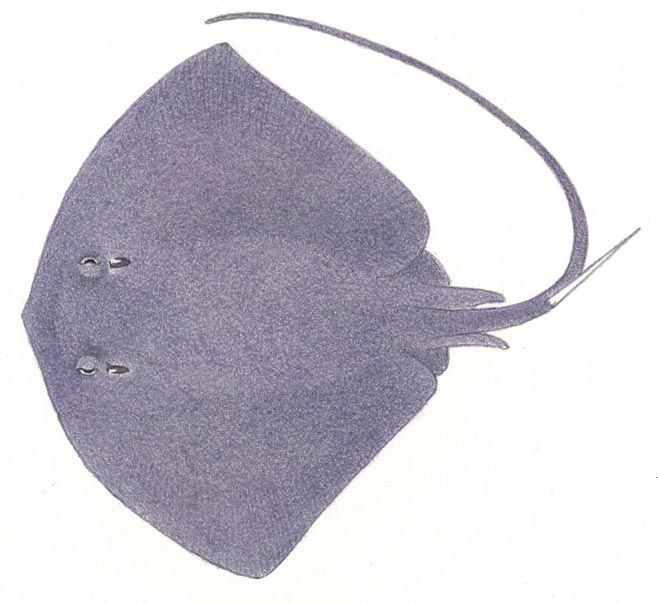|
Pteroplatytrygon violacea (Pelagic stingray)
(Bonaparte, 1834)
Life
> Eukaryotes >
Opisthokonta
> Metazoa (animals) >
Bilateria >
Deuterostomia > Chordata >
Craniata > Vertebrata (vertebrates) > Gnathostomata (jawed
vertebrates) > Chondrichthyes > Elasmobranchii > Batoidei >
Myliobatoidei >
Dasyatidae
 |
|
Pteroplatytrygon violacea (Pelagic stingray) [Illustration
by Ann Hecht ©] |
Identification
A dark thick stingray, uniformly
purplish-violet or dark blue-green on both surfaces. Snout broadly
rounded but pectoral disk angular, eyes not protruding from head
(unlike other stingrays, which have froglike periscopic eyes), tail
less than twice body length and with a long lower caudal finfold
that ends far in front of tail tip but no upper fold. Disk without
thorns, usually one extremely long sting on tail.
Size
To 1.6 m TL
and 80 cm DW.
Range
Southwestern coast, False Bay and Mossel Bay;
virtually circumglobal.
Habitat
An anomaly among stingrays, lives
in the open ocean and well off the bottom, sometimes close inshore.
Biology
An agile swimmer, eats oceanic squid, crustaceans,
jellyfish, and small fishes, using its pectoral fins to manipulate
its prey to its mouth.
Human Impact
Rarely caught except by longline vessels, once caught by an angler in False Bay.
Text by Leonard J.V. Compagno, David A. Ebert
and Malcolm J. Smale
|
